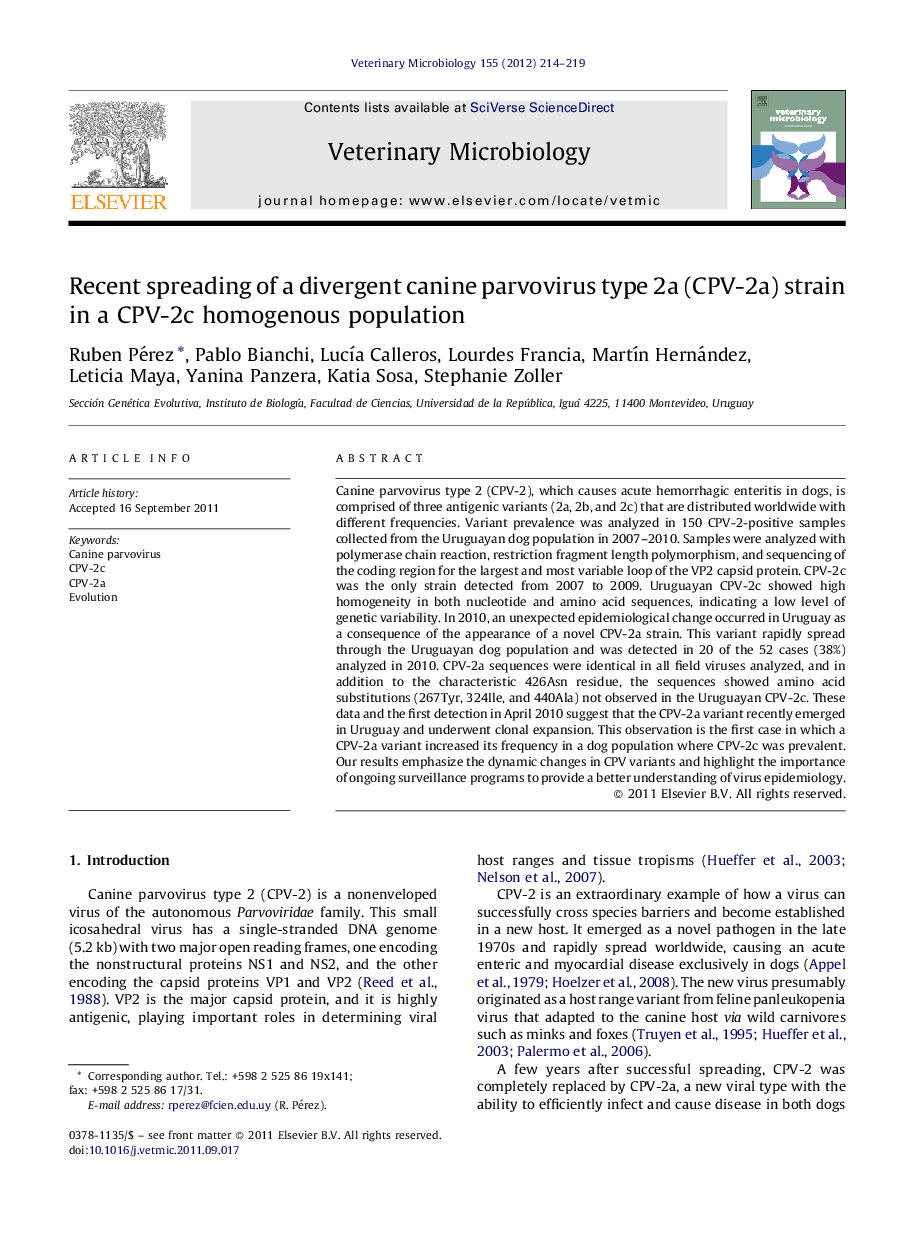| Article ID | Journal | Published Year | Pages | File Type |
|---|---|---|---|---|
| 2467441 | Veterinary Microbiology | 2012 | 6 Pages |
Canine parvovirus type 2 (CPV-2), which causes acute hemorrhagic enteritis in dogs, is comprised of three antigenic variants (2a, 2b, and 2c) that are distributed worldwide with different frequencies. Variant prevalence was analyzed in 150 CPV-2-positive samples collected from the Uruguayan dog population in 2007–2010. Samples were analyzed with polymerase chain reaction, restriction fragment length polymorphism, and sequencing of the coding region for the largest and most variable loop of the VP2 capsid protein. CPV-2c was the only strain detected from 2007 to 2009. Uruguayan CPV-2c showed high homogeneity in both nucleotide and amino acid sequences, indicating a low level of genetic variability. In 2010, an unexpected epidemiological change occurred in Uruguay as a consequence of the appearance of a novel CPV-2a strain. This variant rapidly spread through the Uruguayan dog population and was detected in 20 of the 52 cases (38%) analyzed in 2010. CPV-2a sequences were identical in all field viruses analyzed, and in addition to the characteristic 426Asn residue, the sequences showed amino acid substitutions (267Tyr, 324Ile, and 440Ala) not observed in the Uruguayan CPV-2c. These data and the first detection in April 2010 suggest that the CPV-2a variant recently emerged in Uruguay and underwent clonal expansion. This observation is the first case in which a CPV-2a variant increased its frequency in a dog population where CPV-2c was prevalent. Our results emphasize the dynamic changes in CPV variants and highlight the importance of ongoing surveillance programs to provide a better understanding of virus epidemiology.
